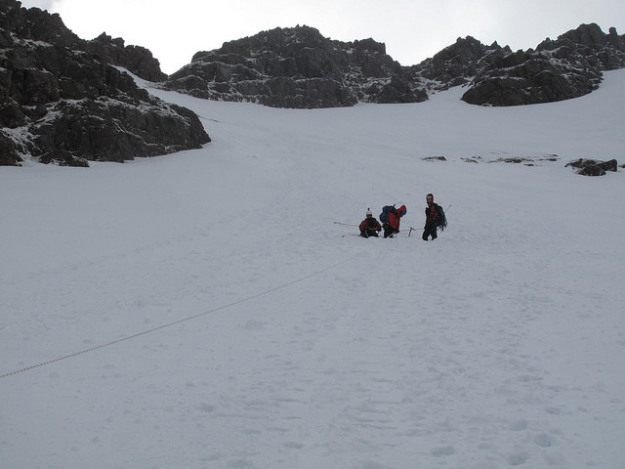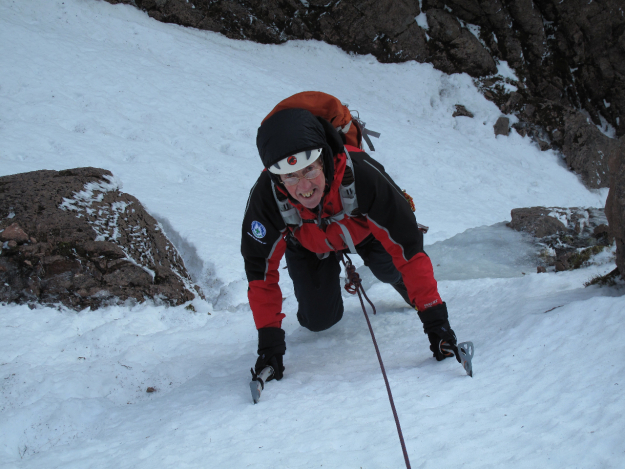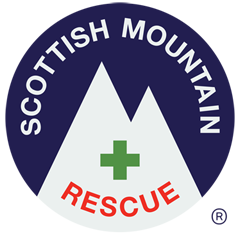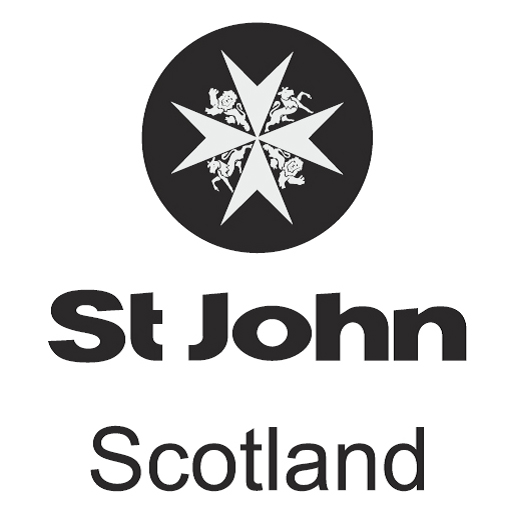
The plan for the day was to further the techniques of constructing and using snow anchors learned last month and put them into practice carrying out a multi-pitch stretcher lower down an extended snow apron. However after 36 hrs of heavy rain and rising temperatures the crux of the day was looking like finding enough snow on the hill. Thankfully Coire an Laoigh on Beinn Eighe can usually be relied upon to hold any lasting snow and on this occasion did not disappoint. The characteristic bowl shaped corrie offers a range of aspects from NE through to SW and had good accumulations despite the high ground around being all but stripped. Given the heavy rainfall the previous day we were expecting a stable and consolidated snowpack albeit with small and localised accumulations on lee slopes from an overnight dusting. This was the situation as forecasted by the local Avalanche Information Service with the resulting avalanche category given as low for the day. Despite this, given the number of people in the group and we headed out with full personal winter kit in addition to a stretcher, multiple ropes and hardware.
We were joined by 4 members of the Kintail team who were keen to share some practices, see first-hand how Torridon team manage a lower / hoist scenario and perhaps just as importantly as a joint team building exercise. We do when necessary carry out joint rescues with our neighbouring areas, so any opportunity to get to know these team members is worthwhile in itself.
The exercise was split initially with a refresher given by our in house Drill Sergeant Sutherland into the finer points of constructing snow belays from dead-men, buried axes and snow pickets. Meanwhile those who had covered this in last month’s training were deployed to the top of the corrie with the stretcher in order to build the first stance from which we would be commencing the lower. Ron and Graham were tasked with being stretcher attendants – there to guide the stretcher down and be on hand to monitor the casualty during the descent. Andrew and Jenny took over control of the first lower while myself and Arjan, and later accompanied by the rest of the team, were tasked with chasing down the hill ahead of the stretcher constructing belay stances as we went. The aim being that the stretcher could then be ‘passed’ seamlessly from station to station with minimal delay or disruption to the downward progression of the casualty.
For the purposes of the exercise we were using 50m ropes, forcing multiple changeovers on the descent. In a real situation we would undoubtedly be using the long ropes and most probably tying multiple ropes end on end to give us maximum lowering capability without delay. However, shorter ropes were ideal for the exercise and certainly highlighted the importance of accurately estimating the distance between stances. I for one was responsible for attempting an ‘over-ambitious’ 50m pitch which required a small amount of stretcher bearing to get us back on track. The other point to highlight was the importance of getting each belay stance offset to the line of the lower.
Of the many differing types of snow belay used, certainly dead-men are the quickest to place although have limitations as we found out in soft snow. On testing a couple just pulled straight through the snowpack highlighting the importance of testing anchors are well seated before being used to bare load. Of the horizontal buried axes and snow stakes the latter out-performed the former in soft snow every time.
After a successful lower we demonstrated converting a lower to a hoist. A simple process when using the Petzl ID and one which Kintail were keen to see first-hand. A quick bite and a short trek back to the road saw the exercise over and back to base for the de-brief.
Mark Edmonds


